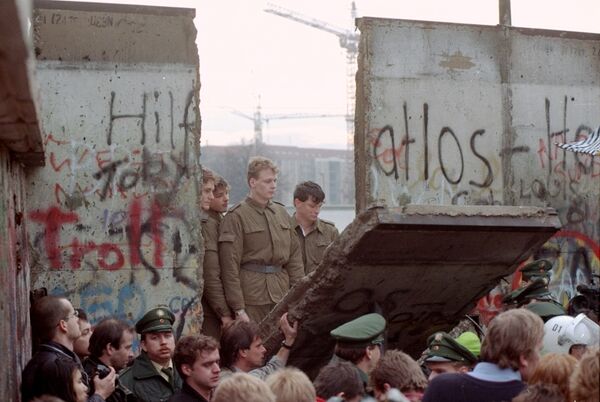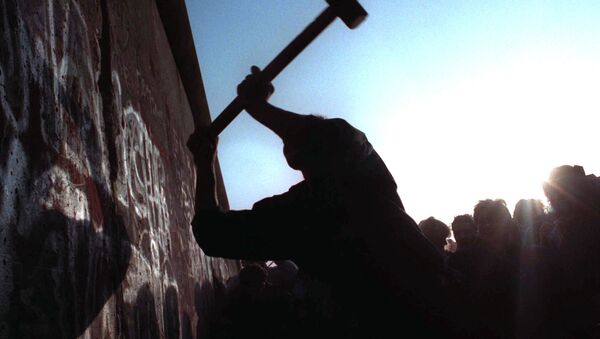As the country celebrates German Unity Day, many within the German establishment preach how far the country has moved forward and changed from the divided years.
However, others are far less optimistic, saying that although Germany may officially be a united country, there are many things that remain the same from the East-West days.
What Has Changed: No Wall, One Currency and a Powerhouse of Europe
While parts of the Berlin Wall were first torn down nearly a year before unification on November 9, 1989, the symbol of the divided country is now all but gone around the city, apart from a few minor stretches — which serve as memorials and tourist attractions.

Berlin was arguably affected the most by unification, with the city reinstated as the country’s capital. During the Cold War days, East Berlin was used as the capital of East Germany, known as the DDR, while the West Germany’s houses of parliament and main operations were based in the city of Bonn.
Another dramatic change to rock Germany since coming together was the introduction of a currency union and the East German shift from communism to capitalism.
Following the removal of the travel ban on those wishing to pass from East Germany to West, many realized that the DDR’s Ostmark paled in value to the Deutsche mark.
So before unification, Germany’s financial chiefs devised a plan that would see East Germans adopt the Deutsche mark. The plan to exchange the currencies on a one-to-one basis proved to be very controversial. While many citizens of the East were pleased, numerous businesses in the DDR were forced to go under, as they couldn’t compete with the highly modernized West German economy.
The unification has also seen Germany emerge as a political and economic powerhouse of Europe again.
Following years of divisions, Berlin is now considered to be the most dominant economy in Europe, with Chancellor Angela Merkel thought to be the most influential politician in the EU.
What Hasn’t Changed: Wages, Quality of Life, the Invisible Wall
While Germany has experienced many changes over the past 25 years of unification, many have applied the old saying 'as some things change, others stay the same' to the country.

Many have cited the difficulty in adjusting the former communist East Germany to the West’s capitalist ways, with critics arguing that an invisible wall still divides the country from east to west.
Despite GDP in the former East German regions more than doubling in the past 25 years, it still remains at about two-thirds the levels of the former West German federal states.
While it has been estimated that more than $1 trillion has been spent on improving infrastructure and encouraging investment in the former East German regions, many have pointed to the social divide, arguing that wages and employment opportunities are still considerable lower compared to the old West.
Unemployment remains at around 10 percent for the former East Germany, while the number is much lower at around 6 percent in the West, with critics arguing that uneven opportunities have led to a brain drain westwards, which could have further social impacts in decades to come.





